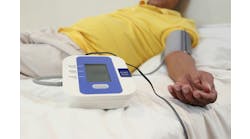The Danville, Pa.-based Geisinger health System and the Burlington, Vt.-based Vermont Information Technology leaders (VITL), that state’s statewide health information exchange (HIE), are among those moving forward very rapidly, and showing the way to a new future.
At Geisinger Health, senior IT leaders, including senior vice president and CIO John Kravitz, Bipin Karunakaran, the vice president in charge of data management, and Joseph Scopelliti, IT director, data management, have been helping to lead their colleagues forward in moving to leverage data and analytics, with their major focus the creating of a Unified Data Architecture (UDA), which integrates all of the analytic platforms at Geisinger Health System. The key component of the UDA has been the creation of the Big Data (Hadoop) platform, the creation of which was the first phase of the project (in that, they say, the Armonk, N.Y.-based IBM Healthcare has been a partner). In a one-year timeframe, the team established a big-data platform, based on Hadoop and other open-source components.
What is key here has been the push on the part of the organization’s senior IT executives to facilitate robust end-user analytics self-service, a goal that has required very significant foundational IT architecting. “In the past, if data analysts wanted to do some research or analysis, they would have to request research from the data team,” Scopelliti notes. “Now, all of a sudden, with the data warehouse, they could do this themselves, and data analytics exploded, in a good way. And IBM came in and helped us with this. And we ran with that until 2012. And then we decided that we needed a different data warehouse, so we moved to a TeraData data warehouse with stronger computing capability. And we’re still running that. We have thousands of reports and dashboards that are running on clinical decision support information systems.”
Joseph Scopelliti
Ultimately, what is emerging is exactly what Kravitz, Karunakaran, Scopelliti, and their colleagues have been intending: a hyper-robust data platform that will allow for a new generation of data use, data sharing, and data analysis. Has it been hard work? Definitely, Scopelliti testifies. “Last summer,” he says, “we were putting in 10 to 12-hour days, six to seven days a week, to create the Hadoop platform. But that platform is a key component of the UDA. A colleague and I did a presentation at a conference a few months back, and we made a statement: Most people in healthcare see a big data platform as a supplement; they’re very hesitant to put all their eggs into one basket. But we see this as a replacement. We think we can retire the data warehouse, and that the UDA will effectively take its place, with most of the work being on the Hadoop platform. And our goal is to achieve that within 18 months.”
What’s more, Scopelliti says, in order to do this, “You’re taking all the traditional data warehouse sources—roughly 20, including the Epic EHR [from the Verona, Wis.-based Epic Systems Corporation], other clinical data, financial data, claims data—and channeling all those sources into the data platform. But the key is that the team wrote a data ingestion pipeline, and they wrote it in Map-Reduce and Java code. And so the idea is that it makes it very accessible—it allows us to ingest new source data very quickly. Now we have a quick way of ingesting data into the Hadoop platform. So you build the hardware infrastructure, set up the underlying code to ingest data—and now, we have the task of migrating all of the existing analytics programs into that infrastructure. My team’s primary task is the building and maintaining of the hardware and software for this program. And any new development, we’re trying to do in the new platform.”
John Kravitz
Vermont’s Comprehensive Push Forward with Actionable Data
At VITL up in Vermont, Michael Gagnon, the HIE’s chief technology officer, reports that his organization has spent several years developing the infrastructure to support robust data analytics work on the part of all of the HIE’s participant organizations. VITL, which officially opened in 2005, was born out of public-private collaboration, and that collaboration continues to fuel its pioneering work. VITL was created by the Vermont Association of Hospitals and Health Systems, in conjunction with the state government of Vermont. It now encompasses 14 hospitals, all 11 of the state’s hospital organizations, plus two hospitals in New York and one in New Hampshire, as well as 130 medical practices. “We knew that we’d be collecting data for population health early on,” Gagnon says. “Even our first HIT plan anticipated a hybrid data model between a federated model, the de rigueur model at the time, and a centralized model with a data repository that could be used for population health.”
Michael Gagnon
After necessarily switching core vendors—they are now using Medicity as their core HIE vendor—Gagnon says, “We built out our own infrastructure to effectively build a clinical data warehouse. So we’ve been collecting all CCDs [continuity of care documents], all ADTs [admissions, discharges, and transfers], all lab reports, all transcribed reports, all immunizations, into this repository for two years now. And that’s presented opportunities and challenges. But it has already proven itself to be quite effective with our accountable care organization in the state.” What’s more, the volume of data being exchanged has grown dramatically, to the point where nearly a half-million CCDs are being exchanged now every month, and about 5 million clinical messages a month are being exchanged, “in a state of only about 650,000 or so,” as he points out. In addition, he notes, VITL has gone live with natural language processing software (from the Alphen aan den Rijn, Netherlands-based Wolters Kluwer) that is “converting labs to LOINC and problem lists to SNOMED and medications to RxNorm, and so on and so forth; a lot of different terminologies are involved, and there’s a fair amount of work in mapping things out, but it has a lot of synonyms.” As a result, he says, their system understands that, for example, “glycated hemoglobin” is the same as “hemoglobin A1C.” Then, he notes, another software program processes clinical messages, “So that when we get the HL7 messages, that’s our first level of input and processing, and from there, we run them against the terminology services engine”—Rhapsody from the Scottsdale, Ariz.-based Orion Health—“and we take all the CCDs—and we’re pretty proud of the fact that we wrote our own CCD parser that disassembles them down into their individual data elements. And that’s really rocketed us forward.”
At Orlando Health, a Focus on Sepsis
All kinds of patient care organizations are making use of analytics now, as their use accelerates rapidly across the U.S. healthcare system. At the six-hospital Orlando Health, Eric Rose, Pharm.D., manager of corporate clinical decision support and pharmacy informatics, is helping to lead an initiative, leveraging the Vigilianz Intelligence platform to leverage analytics to detect and manage sepsis incidents. So far, the initiative has documented advances in a carefully launched pilot. “Our primary approach,” Rose explains, “has been to have the charge nurse in our pilot units a couple of times per shift go into the tool and look for patients with a worsening trend in their case. I’ve been comparing this tool to how meteorologists use the ‘cone of prediction’/’cone of uncertainty’ to predict hurricanes.”
Essentially, Rose says, the predictive tool plays to the strength of data-driven tools, by alerting nurses on the health system’s medical/surgical units to worsening trends among patients on those units, rather than requiring clinicians to search existing data for trends. And though he and his colleagues don’t yet have major data to document results, it’s very clear anecdotally that, since last July when the pilot was started, nurses are feeling more confident that they are spotting the signs of potentially emerging sepsis far faster.
There are many practical implications of this, Rose says. “Ultimately, I think that this will allow us to better focus our human resources. If we have a limited number of staff with a given area of expertise, and we can provide these predictive models and a pre-sorted list of patients with potential readmission risk or sepsis risk or falls risk, rather than reacting after the event, if we can identity folks in advance, before they reach an adverse event, that’s the goal.”
Putting it all Together—New Implementational Models
Ultimately, all of those interviewed for this article agree: this journey forward into the new data-driven world will be a long, complex, challenging one. Scopelliti, Gagnon, Rose, and their colleagues at Geisinger, VITL, and Orlando Health all emphasize that healthcare IT leaders must begin now to lay the foundations for the new world that the U.S. healthcare system is moving into and through. It is a world that will require that the leaders of patient care organizations think on a deep, as well as broad, strategic level, about what they need to do to support and facilitate population health management, accountable care, and value-based care delivery and payment arrangements.
But the need to build these foundations in both a strategic and practical way, is becoming clearer and clearer, healthcare IT leaders agree. And, even as the outlines for how to build such foundations become clearer, the good news is that organizations like Geisinger, VITL, and Orlando Health are already offering case studies that can be digested, emulated, and modified as necessary, by the leaders at countless other U.S. patient care organizations. There’s no question that those organizations are beginning to provide operational and implementational maps to that new world, that can be customized as desired to meet the individual needs of the diverse patient care organizations across the U.S. healthcare system, as they evolve forward into the new, data-driven world of patient care delivery and payment.





